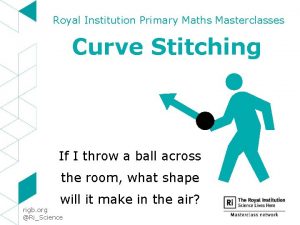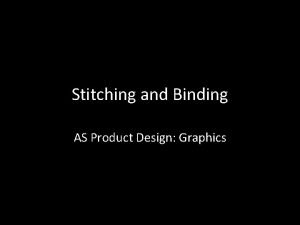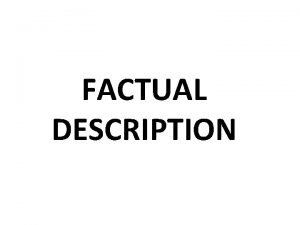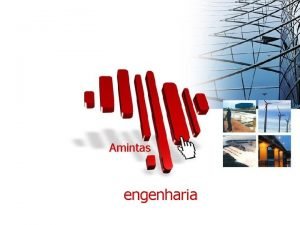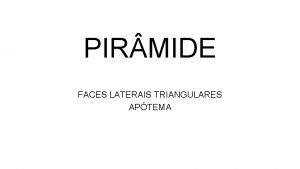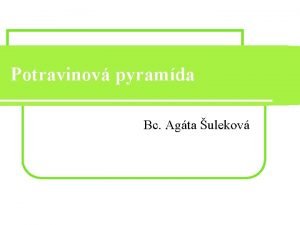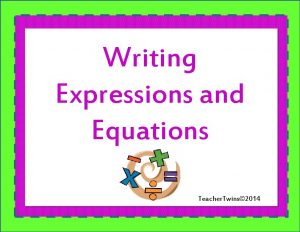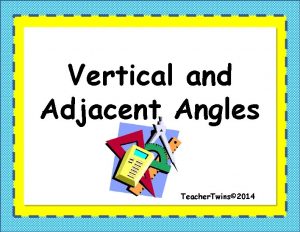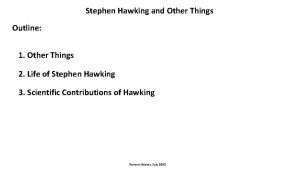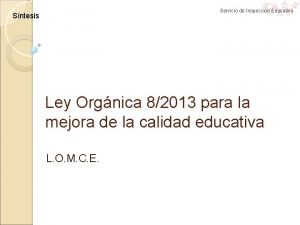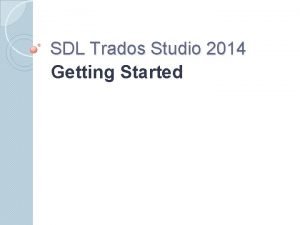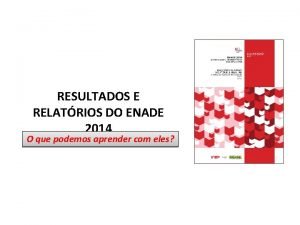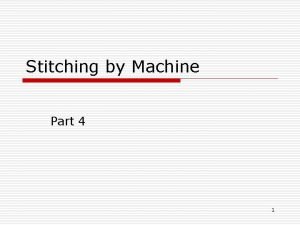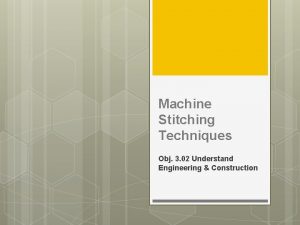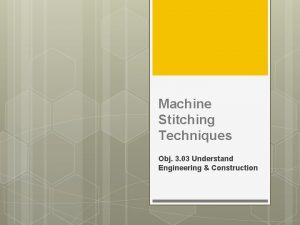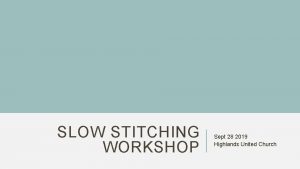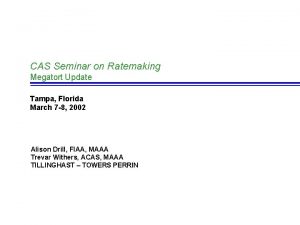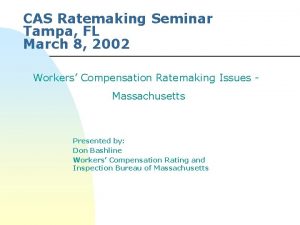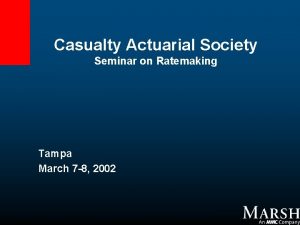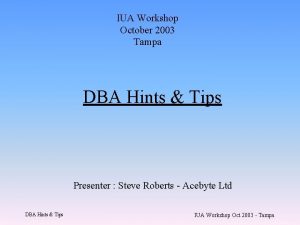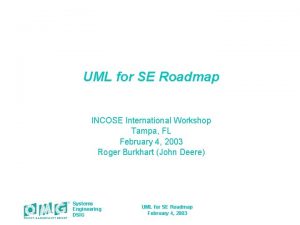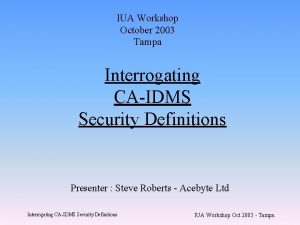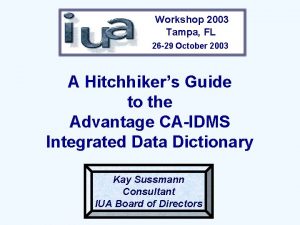Stitching Techniques Workshop Tampa Seminar 2014 A resource
























































- Slides: 56

Stitching Techniques Workshop Tampa Seminar 2014 A resource for ABEA members wanting to acquire their Certified Instructor stitching certification R 2 25 Aug 2014 1

Index Stitch / Technique Variation / Extension 1. Running Stitch a) Irregular Running Stitch b) Short Running Stitch & Curve Stitch c) Outline Stitch d) Split Stitch e) Seaming 2. Wedge Stitch a) Mountain Stitch & Zig-Zag Stitch 3. Satin Stitch a) Rope Stitch b) Inlay Stitch 4. Cord Stitch a) Modified Cord Stitch b) Curved Cord Stitch c) Toss Stitch 5. Padding a) Line Padding 6. Blending & Stitch and Clip a) Row Blending b) Flower Petals c) Leaves d) Overlay Stitch 7. Leaf Veins and Tips 8. Grass Stitch & Clusters R 2 25 Aug 2014 2

Stitch / Technique Index Variation / Extension 9. Bamboo 10. Birch Trees 11. Pine Branches & Trees with Vertical Trunks 12. Pine Needle Stitch & Clusters 13. Evergreen Trees 14. Tiger Eye 15. Polished Thread a) Tiger/Bird Claws, Bird Beaks, & Fish Feelers b) Hair Planting 16. Bird Feathers 17. Fish & Dragon Scales 18. Tiger Whiskers 19. Blizzard Stitch 20. Picot Stitch 21. Lazy Daisy, Chain Stitch, and Couching R 2 25 Aug 2014 a) Twisted Picot b) Foam Stitch 3

Index Stitch / Technique Variation / Extension 22. Popcorn Stitch 23. Pile Stitch a) Fluffy Stitch b) Sculptured Fluffy c) Reverse Stitch 24. Lattice or Ladder Stitch 25. Wave Stitches in water Note: Stitching techniques for following are not covered in this version of this Document. Look for 2 nd stitching workshop in 2015 to complete this material. Faces Contours for features, stitch direction and shading Nose, lips Eyes Lion, Dragon, Eagle, Fish, Human and others R 2 25 Aug 2014 4

1 - Running Stitch • Instructions: Draw 3 straight lines each about 6 inches in length. • Stitch with ½ inch stitches from left to right if right handed—opposite if left handed. – If stitches are ½ in in length then 12 will be the length of a dollar bill • Brick lay each row (alternate stitch rows so that needle does not enter fabric immediately before previous row. R 2 25 Aug 2014 5

1 a Irregular Running Stitch • Draw 2 additional lines • Stitch with alternating stitch length R 2 25 Aug 2014 6

1 b Short Running Stitch & Curve Stitch • Use small running stitches to form a curve R 2 25 Aug 2014 7

1 c Outline Stitch • Draw a line with rolling curves • Stitch small stitches directly on line and scratch down to be tight as possible R 2 25 Aug 2014 8

1 d Split Stitch • Draw a line or a curve • Stitch in standard running stitches and clip thread • Then stitch a 2 nd row of stitches directly over the initial row and offset by about ½ stitch • Make sure you actually stitch through the initial stitch with the needle for the 2 nd row • Stitches are actually ‘sitting’ on top of each other creating a heaver line but not widening the stitched area R 2 25 Aug 2014 9

1 e Seaming • Running stitch technique used in sky stitching where tree branches also exist • Stitcher punches into the tree branch line as each row is stitched • Allows the shape of the branch to remain in the ‘seam’ • Branch can later be stitched without loosing its shape R 2 25 Aug 2014 10

2 - Wedge Stitch • Fill an irregularly shaped area, using normal stitch length and then using shortened stitch length (wedging) to change the angle of the stitching • Used in mountains, rocks, clouds, or around a curve R 2 25 Aug 2014 11

2 a Mountain Stitch & Ziz-Zag Stitch • Fill an irregularly shaped area, using normal stitch length and then using shortened stitch length (wedging) to change the angle of the stitching • Used in mountains, rocks, clouds, or around a curve • Also can be referred to as Zig-Zag stitch R 2 25 Aug 2014 12

3 - Satin Stitch • Stitches of equal length • Stitched in same angled direction filling in space smoothly • Has been referred to as ‘stem stitch’ • Matsuhato calls this stitch ‘cord stitch’ R 2 25 Aug 2014 13

3 a Rope Stitch • Wide line • Line padding and center pad can be used based on picture • Then stitch over with Satin Stitch (or what Matsuhato calls Cord Stitch) R 2 25 Aug 2014 14

3 b Inlay Stitch • Lay a continuous length of un-pulled thread over line or in center of stem • Can add ‘couching’ or temporary stitches to tack in place • Then stitch over with Satin Stitch at an angle R 2 25 Aug 2014 15

4 - Cord Stitch • Work one stitch (on an angle) • Then go back 1/2 stitch to take the next stitch • No space should be between the stitches • They just make a thicker stitching line R 2 25 Aug 2014 16

4 a Modified Cord Stitch • Same as Cord Stitch • Except to back 2/3 stitch • Notice the resulting line is thicker due to the alignment of 3 stitches R 2 25 Aug 2014 17

4 b Curved Cord Stitch • Same as Cord Stitch • Stitches and angle will change based on shape • Stay consistent with return stitch length R 2 25 Aug 2014 18

4 c Toss Stitch • Modification of a cord stitch • Stitches are longer and more irregular • Start first stitch about ½ to ¾ inch above the edge of the design • 2 nd stitch is forward most of the way • 3 rd is a shorter back stitch • Creates an uneven surface and rows will actually blend into each other on the neck of the Blue Heron R 2 25 Aug 2014 19

5 - Padding • Standard uses are flower petals and leaves where they fold over and flower buds • Also where picture looks like it is ‘thicker’ or ready to burst • Maybe worked as single or multiple color • Under layer stitches worked in opposite direction R 2 25 Aug 2014 20

5 a Line Padding • Technique that can be used to smooth edges and cover ‘blue lines’ • Tiny stitches are placed just ‘outside’ the pattern line and scratched down to be close to the canvas • Then covered by other stitches in the opposite direction • Not a Matsuhato technique • Good for beginners to use to improve edges of flower petals, leaves, etc. R 2 25 Aug 2014 Can line pad the edge Of the petal fold before Adding the satin stitches to Fill area 21

6 - Blending & Clip and Stitch • Clip and stitch is another technique that can be used to introduce single stitch colors or to ‘hide’ a gap R 2 25 Aug 2014 • Stitch area with long and short running stitches • Middle color can blend into both the darkest and lightest colors • Dark color should NOT blend to the lightest nor the lightest in to the darkest color • Stitch and clip to cover holes if necessary and to smooth blending. • Blending is used in lots of pictures for flower petals, leaves, bamboo, branches, mountains, clouds, skys, etc 22

6 a - Row Blending • Primarily used in a sky or water to allow for gradual change in color • Carefully remove a row that has already been stitched • Replace with alternate color • Care should be taken to ensure exact replacement of stitch angle • An alternative approach is to end the stitch of one color and clip, then start the new color with initial stitch in the same hole as the prior color ended. • Both the row blending and the alternative will give the same results. R 2 25 Aug 2014 23

6 b Flowers and Flower Petals Use padding to cause petal fold To stand out R 2 25 Aug 2014 • Flowers are stitched in a background to foreground sequence. • The very furthest back petal or leaf is stitched first • Then the next furthest etc. • Matsuhato does not ‘line pad’ petal edges but technique delivers for inexperienced stitches smooth edges and lack of ‘blue lines’ showing! 24

6 c Leaf Blending • Some leafs have no blending, others multiple shades • Use wedge stitch to keep direction • Watch Stitch Direction R 2 25 Aug 2014 25

6 d Overlay Stitch • Form of blending where 2 nd color is stitched over the initial color • On the M 245 Horses, many of the “blend lines” shown on the line drawing are not on the stamped canvas – Use of overlay stitch adds muscle tone to the horses • Other kits such as some mountain scenes use similar technique to provide additional depth to mountain surface R 2 25 Aug 2014 26

7 - Leaf Tips • Single pointed leaves end with a single stitch R 2 25 Aug 2014 27

7 a Leaf Veins • Stitch vein using running stitch • If you see the vein ‘on top’ of the leaf then stitch it after stitching the leaf • If you see the vein ‘behind’ the leaf, then stitch it before stitching the leaf R 2 25 Aug 2014 28

8 - Grass Stitch and Clusters • Many landscapes use random leaf shapes in one or more sizes to add depth and color • First use 1 color to stitch the leaf sequence • Then use 3 colors to work the individual leaves • Then use 3 colors and overlap the leaves R 2 25 Aug 2014 29

9 - Bamboo • Trunks are stitched in direction that the stalks grow using long and short stitches to blending • Joint is stitched in satin stitch—sometimes padded in opposite direction as joint • Latest trend is not to pad the joint, so watch kit directions for appropriate technique application R 2 25 Aug 2014 30

10 - Birch Trees • Line pad outer area of the trunk. • Stitches run across the trunk with blending where indicated. • The bark in many areas will look to be ‘peeling’ so much is not blended R 2 25 Aug 2014 31

11 - Pine Branches and Vertical Trunks • Stitched following contour of the tree trunk or branch • Blending where required • Some areas will be outlined and then ‘filled in’ with lighter color • Use wedge stitch to maintain appropriate stitch direction R 2 25 Aug 2014 32

12 - Pine Needle Stitch & Clusters • Simple stitch that resembles a V • Stitches can be connected and then cut and ends scratched to under side to speed completion • Clusters are accomplished by stitching V’s in a pattern of long and short stitches • Normally use 2 or 3 shades of color to establish depth in cluster R 2 25 Aug 2014 33

13 - Evergreen Trees • Can be distant, large or small • Start stitching at the bottom of the tree • Typically layered to add dimension • Tall triangular in shape but very irregular on edges • Newer Matsuhato technique R 2 25 Aug 2014 34

14 -Tiger Eye • Make exact pattern of both eyes before stitching on tiger • Pad center of eye with two layers; one layer covers most of the eye • From gold ribbon cut out eyes from pattern keeping track of left/right • Glue gold ribbon over padded eye • Create pupil using un-pulled thread to make coil of appropriate size • Cut ends of thread at angle so it will tuck into the circle • Glue pupil in place R 2 25 Aug 2014 35

14 - Tiger Eye (continued) • With 2/4 pull, glue on circle around pupil • With un-pulled thread, glue lower line of eye and then the upper border of eye • Cut at an angle so they taper off • Tie knot in 2/4 white thread and glue in appropriate spot for the highlight Note: Eyes for Lion, Dragon, Eagle, Fish and Humans are typically stitched With 2/4 pull following pattern direction of eye. R 2 25 Aug 2014 36

15 - Polished Thread • Thread to be polished can be ¼, 2/4, or ¾ pull depending upon the need for a thicker or thinner line • Run thread through your fingers to remove the kink from the thread • This will create a smooth appearance to the thread. • The more you pull the straighter the thread will be and its appearance will become ‘polished’ R 2 25 Aug 2014 37

15 a Tiger/Bird Claws and Beaks and Fish Feelers • Stitched in polished thread with ¾ pull for larger items and 2/4 pull for small. • Pad with 2/4 thread • Then stitch claw, beak, or feeler in a satin stitch using the polished thread • Follow the curve of the claw, beak, or feeler • Generally better to start at the bigger area and work toward the point • Be sure to keep a sharp point by ending with a single stitch • Stitch under beak before stitching the upper beak R 2 25 Aug 2014 38

15 b Hair Planting • Polish a length of ¼ and 2/4 pull thread (use 2 colors for practice) • Lightly glue the 2 lengths of polished thread—lay aside to dry • Pad hair in 2 or 3 layers of a 3 rd color again for this practice • Over top of padding, using the glued 2/4 thread make 2 or 3 long stitches to cover and make semi circle • Then at hairline use the ¼ glued thread to make small stitches just slightly into forehead and then ending in padded hair • Glue loose hair in place after stitching is completed R 2 25 Aug 2014 39

16 - Bird Feathers • First stitch the ‘window’ in the feather • Make edges very even • Stitch rest of feather using satin stitch and/or blending at an angle as noted in the picture R 2 25 Aug 2014 40

17 - Fish and Dragon Scales • Stitch scales starting at the tail and work scales individually until head • Follow pattern as some scales are padded and will be outlined • Fish feelers are satin stitch • Fish mouth is a padded satin stitch R 2 25 Aug 2014 41

18 - Tiger Whiskers • Tiger whiskers are generally stitched in 3 layers – 1 st is with 2/4 thread – 2 nd is with whisker thread – 3 rd is with twisted whisker thread • All layers are stitched with single LONG stitch • Count the number of the heavier whiskers on your picture R 2 25 Aug 2014 42

19 - Blizzard Stitch • Also called Frill stitch • Created as an over stitch for water by using uneven and irregular stitches to represent foam R 2 25 Aug 2014 43

20 - Picot Stitch • Insert needle in canvas • Take small stitch but keep needle raised from the fabric to form a small loop and then punch into the fabric near the previous stitch • Can be single stitches or in a connected line • Loops should be same size • Primarily used for trims and is a very precise row of stitches R 2 25 Aug 2014 44

20 a - Twisted Picot Stitch • Start with initial steps of making a picot • Instead of making just a small loop, lift needle ½ to ¾ inch above canvas and twist around the needle shank • Then return needle thru canvas almost in same spot as you started, leaving the larger twisted picot stitch on the canvas surface • Take a ½ inch stitch to where you wish next twisted picot to form a lead stitch • Repeat R 2 25 Aug 2014 o o o 45

20 b - Foam Stitch • Start with making a twisted picot • Connect with only a short 1/8 in stitch to where you wish next Foam Stitch • Repeat R 2 25 Aug 2014 o o o 46

21 - Lazy Daisy, Chain Stitches, and Couching • • • From wrong side, with about 1. 5 inch of un-pulled thread extending from the needle eye, punch needle up thru fabric to right side Still holding the needle, grab the loop of the thread from the right side of fabric Slowly withdraw the needle, still holding the loop If a longer ring stitch is desired, carefully pull up the loop; otherwise if shorter desired, pull down on the needle. To move to the next stitch, create some slack in the thread by pulling the needle down ½ to 1 inch. Repeat steps to make additional loops— with the loops being the same length • • R 2 25 Aug 2014 Loops may be tacked down with a small ‘couching stitch’ to simulate small daisy flowers Couching can also just be used across a length of unpulled thread as an accent 47

22 - Popcorn Stitch • • R 2 25 Aug 2014 Using 2/4 pull thread, starting at one side of the circle stitch across to the halfway point with a very close satin stitch Cut and pull the thread end to the back Push a straight pin under the layer of thread through the canvas With pin, push the threads to the side Rotate the canvas and stitch the 2 nd half of the circle starting from the side and working to the center Crowd the stitches together in the middle Cut and pull the thread to the back 48

23 - Pile Stitch • Stitched from the wrong side of the canvas so that the stitches leave the small ‘knot’ on the front side of the canvas • Either 2/4 or ¼ pull can be used depending upon kit directions • Needle must be inserted to the full length of the shank with each stitch to produce the desired loop height • There are ‘Fluffy’ needles available which have longer shanks that our standard N 3 needle. • Stitches should be very close together to provide a ‘solid’ coverage on the front side of the canvas R 2 25 Aug 2014 49

23 a - Fluffy Stitch • Fluffy areas should be completed before other surface bunka stitches are completed • Once the area to be made fluffy is completely filled with pile stitches, use masking tape to surround the area twice to protect the canvas from the brush • Begin brushing the pile stitches with the metal brush with a firm motion towards you with a lifting motion • The threads will begin to separate. By feeling the area, you will be able to feel where there are still pile stitches that have not been brushed R 2 25 Aug 2014 50

23 b - Sculptured Fluffy • Once the area has been brushed completely, some pictures call for the fluff to be ‘sculptured’ • Sculptured means that the fluffy area is trimmed to a more velvety texture • Edges of a sculptured design look nicer when they have been angled to a smooth curve toward the canvas R 2 25 Aug 2014 51

23 c - Reverse Stitch • Same as a pile stitch but does not provide full coverage on the canvas surface • Uses as accent stitches on – Landscapes as moss on trees, small ground flowers – Pupil of eye – Accents on crane legs • Often times, reverse stitches are not marked on canvas but may be indicated on line drawings. • Stitchers must look at color pictures to find these accents!! o oo o Note the little circles Indicating that a reverse Stitch is needed. R 2 25 Aug 2014 52

24 - Lattice or Ladder Stitch 1 3 2 5 4 7 8 R 2 25 Aug 2014 6 9 • Decorative stitch • Creates crisscross design when placed over an already stitched area • Follow numbers to end up with a triangular design 53

25 – Wave Stitching in Water • Wave stitching in water is actually several techniques that can be used together depending upon picture appearance – – – – Running Stitch Blending Outline Blizzard Foam Overlay Reverse Stitch Clip and stitch R 2 25 Aug 2014 54

ABEA CI Techniques Worksheet 1 2 a 3 3 b 12 6 c 7 a 9 R 2 25 Aug 2014 1 a Same as 2 a 3 a 8 Same as 12 Same as 1 and 1 b 1 b 2 1 c 6 c Same as 5 a 5 a Same as 8 5 6 a 6 24 Same as 7 a 4 10 11 25 Same as 4 13 55

11 23, and a, b, c 15 a 15 b 16 21 21 6 b 21 6 d 4 22 1 e 1 d 6 15 18 2 a 14 19 3 b 1 b 4 17 for scales 15 a for feelers Picot Stitch 20 R 2 25 Aug 2014 Same as 5 a Not covered in this document 56
 Bird makes its nest among the thorns of cactus plant
Bird makes its nest among the thorns of cactus plant Image alignment and stitching
Image alignment and stitching Curve stitching equation
Curve stitching equation Visitor stitching
Visitor stitching Image stitching matlab
Image stitching matlab Panorama stitching algorithm
Panorama stitching algorithm Stitching graphics
Stitching graphics Factual description of an event
Factual description of an event Resource leveling is the approach to even out the peaks of
Resource leveling is the approach to even out the peaks of Perbedaan antara resource loading dan resource levelling
Perbedaan antara resource loading dan resource levelling Forecasting techniques in human resource planning
Forecasting techniques in human resource planning Techniques for electronic resource management
Techniques for electronic resource management Hr selectietool
Hr selectietool Techniques for avoiding resource overload? *
Techniques for avoiding resource overload? * West coast officials association
West coast officials association Wg enloe high school
Wg enloe high school Reputation marketing tampa
Reputation marketing tampa Fdot tampa hillsborough expressway authority
Fdot tampa hillsborough expressway authority Dupage fsdo
Dupage fsdo Regency hotel tampa
Regency hotel tampa 1 bus away
1 bus away Presbytery of tampa bay
Presbytery of tampa bay City of tampa development services
City of tampa development services Uma caixa alienigena com o numero 25 gravado na tampa
Uma caixa alienigena com o numero 25 gravado na tampa Super shuttle tpa
Super shuttle tpa Tampa expressway authority
Tampa expressway authority Tampa first sda church
Tampa first sda church Vntb
Vntb Valucentric appraisal firm
Valucentric appraisal firm Tampa presbyterian village
Tampa presbyterian village Ion electric tampa
Ion electric tampa Utampa okta
Utampa okta Faces laterais triangulares
Faces laterais triangulares Tampa va pharmacy
Tampa va pharmacy Tampa bay times nie
Tampa bay times nie Tampa bay times nie
Tampa bay times nie Super shuttle tampa
Super shuttle tampa Fonction technique scooter
Fonction technique scooter Teacher twins 2014
Teacher twins 2014 Health systems building blocks
Health systems building blocks Teacher twins@2014
Teacher twins@2014 Board regulation 1 series of 2014
Board regulation 1 series of 2014 Ieee 519-2014
Ieee 519-2014 Continuity and change thesis
Continuity and change thesis Delinquency report sample
Delinquency report sample Hawking
Hawking 2014 special olympics
2014 special olympics Principles of social services and wellbeing act
Principles of social services and wellbeing act Social services and wellbeing (wales) act 2014 easy read
Social services and wellbeing (wales) act 2014 easy read Agosto 2014
Agosto 2014 Sfc 2014 portal
Sfc 2014 portal Orden 3814/2014
Orden 3814/2014 Trados studio 2014
Trados studio 2014 Magic quadrant for wan optimization controllers
Magic quadrant for wan optimization controllers Enade 2014
Enade 2014 Veterinary nurse conduct and discipline rules 2014
Veterinary nurse conduct and discipline rules 2014 Enade 2014
Enade 2014


